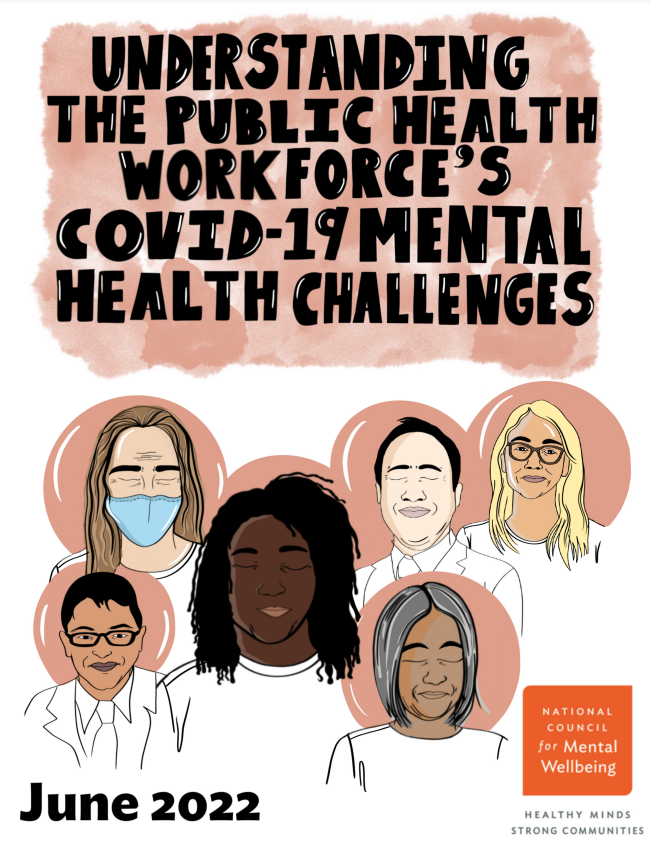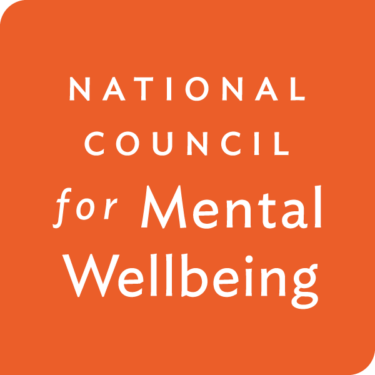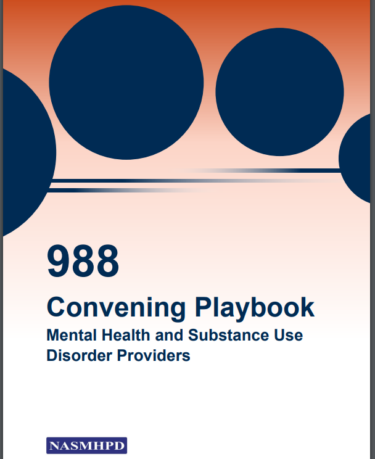Understanding the Public Health Workforce’s COVID-19 Mental Health Challenges

The National Council for Mental Wellbeing created this graphic essay to increase understanding
of the Morbidity and Mortality Weekly Report (MMWR) and Public Health Workforce Interests and Needs Survey (PH WINS) conclusion that “implementing prevention and control practices
that eliminate, reduce and manage factors that cause or contribute to public health workers’
adverse mental health status might improve mental health outcomes during this and other
public health emergencies,” and to facilitate understanding of:
- The ongoing mental health challenges currently faced by public health workers as highlighted in the MMWR and PH WINS surveys.
- The mental health challenges have been experienced by public health workers, as documented through a series of brief key informant interviews with public health workers across the country.
- Recommendations from workers on how to support public health leadership capacity to build departmental and jurisdictional supports around mental health challenges in the workforce.
- Recommendations from public health workers on current and future training needs.
- Additional reflections on how to support development of the public health workforce and human resource mechanisms to mitigate burnout and ensure ongoing staffing recruitment and retention for the next generation of public health workers.
This publication is supported by the Health Resources and Services Administration (HRSA) of the U.S. Department of Health and Human Services (HHS) under grant number UB6HP31684 Public Health Training Centers ($924,899). This information or content and conclusions are those of the author and should not be construed as the official position of policy of, nor should any endorsements be inferred by HRSA, HHS or the U.S. Government.
This publication was also made possible by grant number 6NU38OT000318-02-02 from the Centers for Disease Control and Prevention (CDC) of the U.S. Department of Health and Human Services (HHS) as part of a financial assistance award totaling $250,000 with 50% funded by CDC/HHS. The contents are those of the author(s) and do not necessarily represent the official views of, nor an endorsement, by CDC/HHS, or the U.S. Government.


